Yunnan, Guangxi join actions for closer China-ASEAN ties
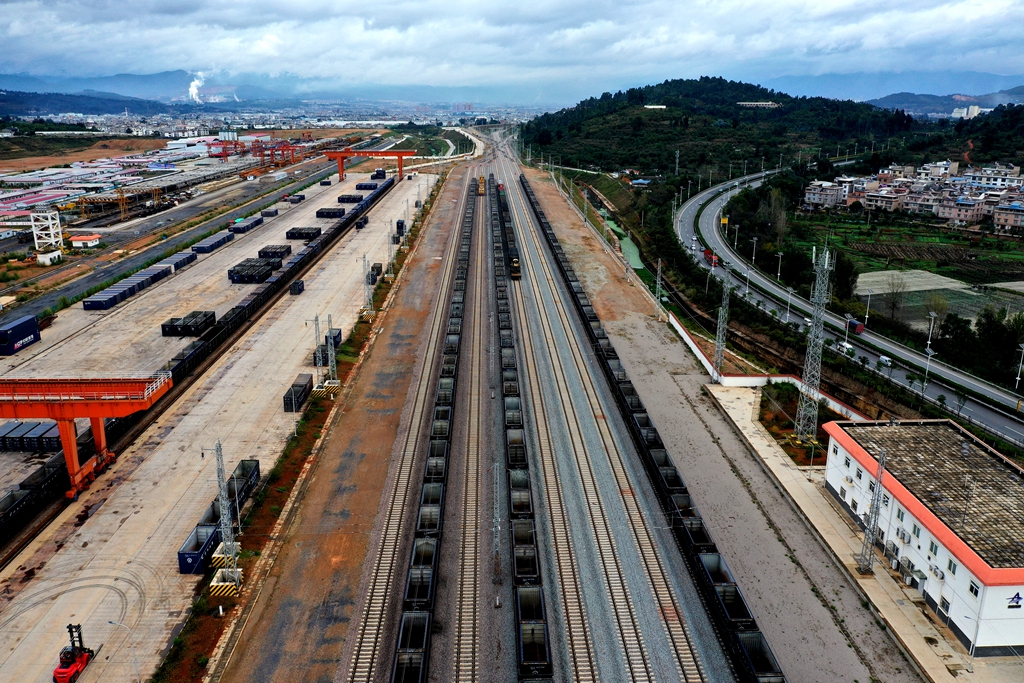
The Yuxi passenger-cargo station on the China-Laos Railway section in central Yunnan (Yunnan Daily/Zhang Tong)
China-Laos Railway opened to traffic on December 3. While the Chinese goods are being exported to the ASEAN countries via the new international rail link that starts from Kunming, Yunnan province, the ASEAN cargos to reach inland China and even the West via the China-Europe freight trains are being unloaded at the Beibu Gulf, Guangxi Zhuang autonomous region.
Both the China-Laos railway and the Beibu Gulf port are docking projects under the China-proposed Belt and Road Initiative. “These projects show that China attaches importance to the opening-up of its western regions, willing to share its development opportunities with the neighboring countries for closer China-ASEAN ties,” said Yu Hong, senior research fellow at the East Asian Institute, National University of Singapore.
From the China-ASEAN Dialogue Relations to a comprehensive strategic partnership, the China-ASEAN ties have, over the past three decades, grown to be an example of success and vitality for international cooperation in the Asia-Pacific Region. And as the only two Chinese localities that border the ASEAN nations, Yunnan and Guangxi have played their due roles in facilitating China-ASEAN relations.
Connectivity
Laos is the only land-locked country in the ASEAN, and its economic development is restrained by slow transport. With the opening of China-Laos railway, however, Lao residents and goods can reach Kunming, Yunnan province in around 10 hours.
In digging the 167 tunnels and building 301 bridges that add up to 712 kilometers on the railway, the Chinese and Lao workers have overcome endless engineering difficulties.
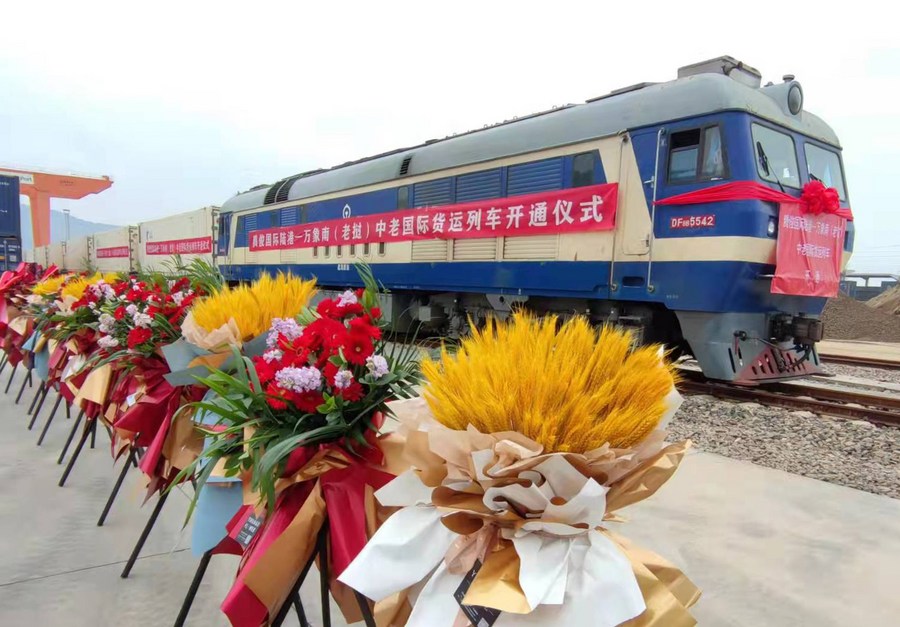
A train carrying 33 refrigerated containers departs from the Tengjun International Land Port in Kunming, Yunnan Province, for Laos, Dec. 4, 2021. (Xinhua)
"Today is a proud moment," said Phouvanh Chanthameexay, a media official with the Lao Ministry of Information, Culture and Tourism on the railway opening, citing Lao president Thongloun Sisoulith. Laos has finally bidden farewell to the days without trains and possessed a modern railway.
Following the opening of the China-Laos railway, the first international freight train from Kunming arrived in Vientiane on Dec 5. On the return trip, specialties of Laos and Thailand were delivered at the Tengjun international land port in Kunming. With transporting costs cut by 40 to 50 percent, some have been transported to cities like Shanghai, Guangzhou and Beijing.
Sitting just across from the Mekong river section near Vientiane, Nong Khai province in northeast Thailand has planned a railway bridge and a cross-border logistic center for connection with the China-Laos railway. Within five years, the daily number of Vientiane-Nong Khai freight trains will increase to 24 from the current four.
The fruitful China-ASEAN cooperation over the 30 years is firstly attributed to geographical closeness and cultural similarity, but the real driving force lies in the big and right decisions made by the two sides.
Supported by the national leaders of China and Singapore, the new land-sea corridor was unveiled four years ago to further link up west China’s Chongqing, Guangxi, Yunnan and others to the ASEAN nations via roads, railways and sea routes.
Now the Guangxi-based Beibu Gulf port is connected to all major ports in ASEAN, and the land-sea routes have covered 13 provinces in China. With the opening of China-Laos railway, a new logistic route was added to the corridor’s freight network.
Statistics show the provinces along the corridor exported 81.2 billion US dollars to ASEAN in the first eight months this year, an increase of 28.7% year on year.
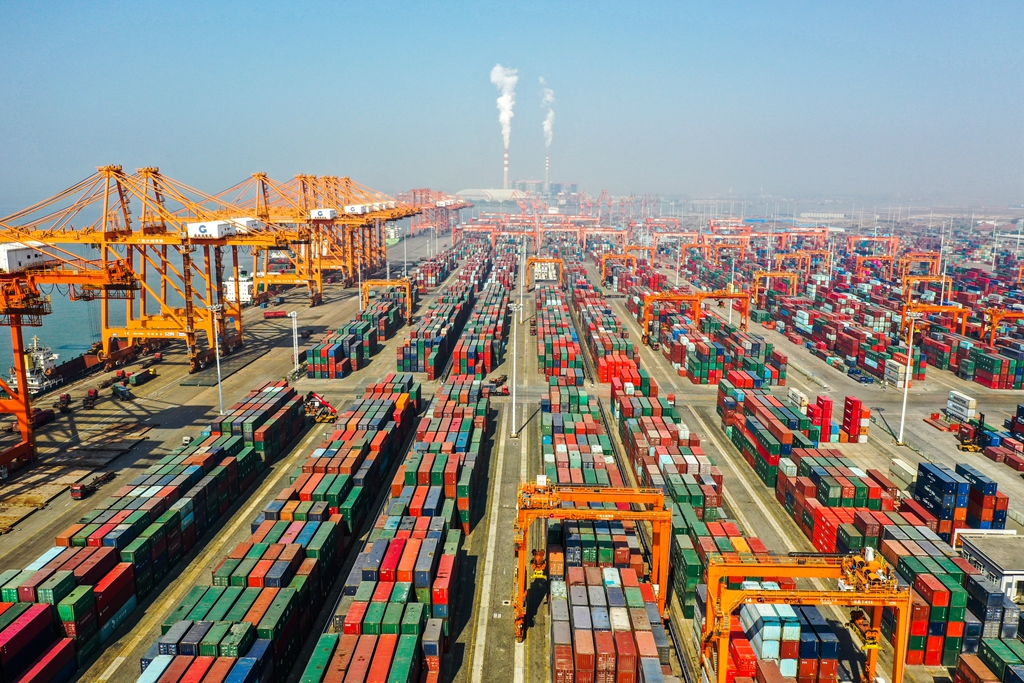
Photo taken in January 2021 shows containers at the Qinzhou port in Guangxi’s Beibu Gulf. (Xinhua/Cao Yiming)
In November 2020, Chinese President Xi Jinping addressed the opening ceremony of the 17th China-ASEAN Expo and China-ASEAN Business and Investment Summit via video, saying that more efforts would be made to build the new land-sea trade corridor, speed up the development of existing economic corridors and key projects, and continue to develop the China-ASEAN Multimodal Transport Alliance.
One month later, Yunnan joined hands with the Laotians in opening the Vangvieng-Vientiane section of the China-Laos expressway that starts at the border town of Boten and ends in Vientiane.
Trial operation of the China-Myanmar new passage(Yangon-Lincang-Chengdu) succeeded for the first time in August this year, forming a direct access between west China and the Indian Ocean.
By September, all steel rails for the Jakarta-Bandung high speed railway, weighing 38,100 tons, were shipped by sea from the Fangchenggang port in Guangxi’s Beibu Gulf in five batches and arrived in Indonesia.
Taking the China-Laos railway as an example, the parties are considering linking Laos southward to rails in Thailand, Malaysia and Singapore, as well as the China-Europe freight rails in the north.
Poverty reduction
While moving its poor population out of poverty, China also joined hands with ASEAN in poverty reduction, sharing its poverty-alleviation practices with the neighbors in need.
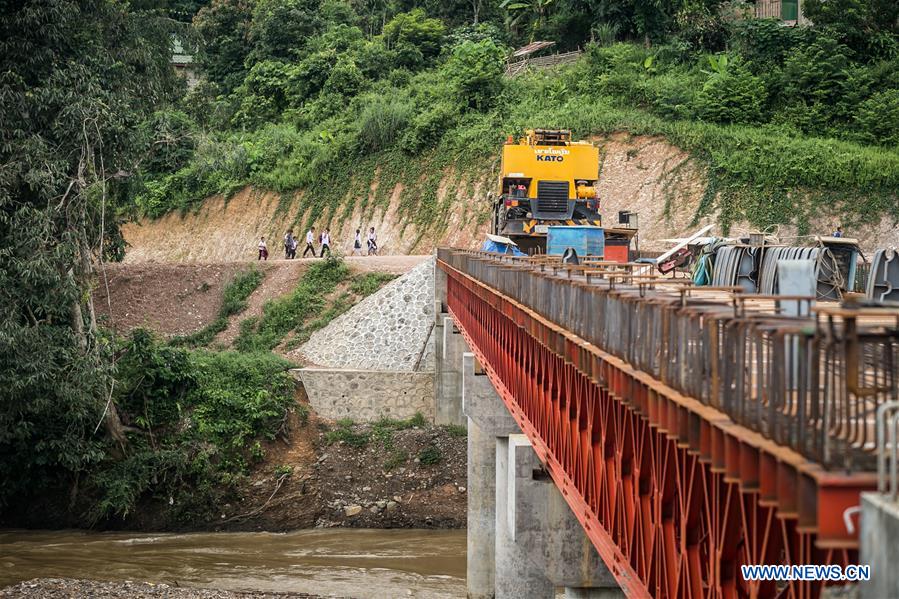
Photo taken on Sept. 15, 2020 shows the new bridge built with aid from Guangxi in Ban Xor village in Vientiane, Laos. (Xinhua/Kaikeo Saiyasane)
In December 2016, the East Asia Poverty Reduction Cooperation Pilot Project was launched in Vientiane, with Guangxi and Yunnan shouldering the specific projects in Laos and Myanmar.
“Planting vegetables in green houses has allowed me to live a good life,” said a farmer in Ban Xor village, some two hours' drive on the bumpy roads to the north from the Lao capital.
In the past, the villagers lived on planting rice with yearly harvest. Having noticed local shortage in vegetable supply, the Guangxi poverty-reduction experts helped the Ban Xor poor families in building up greenhouses, offering technical aid and contacting vegetable dealers for them.
Now the Ban Xor families with greenhouses each has an annual income equivalent to 10,000 yuan, more than doubled. And the village has grown to be a vegetable base in the area.
Over the years, wide roads, power supply and vocational skills have been readily available for folks at the villages of Min Pyin and Aye Chan Thar in Nay Pyi Taw. Poverty-reduction workers from Yunnan brought changes to Myanmar villagers, who in return offered drinking water to the Chinese workers.
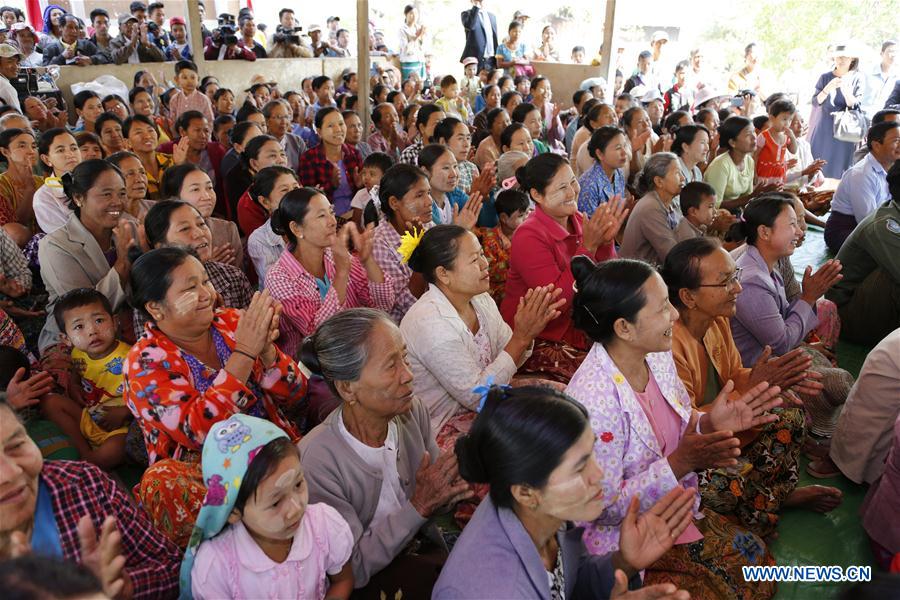
Villegers attend a launching ceremony of a Yunnan-aided project in Nay Pyi Taw, Myanmar, Feb. 1, 2018. (Xinhua/U Aung)
“Targeted poverty alleviation is designed to benefit all those in need of help, and this is the poverty-reduction experience China shares with the world,” said Ben Bingham, China director for the Asian Development Bank.
While creating a poverty-relief miracle within its border, China also helped other developing countries in ridding of poverty by offering funds, techniques and talents.
Besides Laos and Myanmar, other ASEAN members like Vietnam, the Philippines and Malaysia also saw Yunnan and Guangxi specialists aiding locals in farming skills, agro-efficiency and produce quality. Yunnan agriculturist Pan Xinming was awarded by the Lao government, and Guangxi specialist Lv Ronghua won a prize from Vietnam.
“China is ready to strengthen exchange and cooperation with ASEAN on poverty reduction to promote balanced and inclusive development.” In his speech at the Special Summit to Commemorate the 30th Anniversary of China-ASEAN Dialogue Relations, President Xi Jinping again noted bilateral cooperation on poverty relief.
[page]
Joint Covid fight
In the wake of 2020, the Covid-19 pandemic swept across the globe. And in the ensuing days, China and ASEAN have assisted each other, setting an example for international cooperation in the Covid fight.
When certain countries were seeking decoupling with China, Cambodian premier Hun Sen become the first state leader to visit China during the Covid outbreak. Thai premier Prayuth Chan-ocha sent special video greetings to China, while Malaysia timely donated 18 million gloves to the epicenter Wuhan.
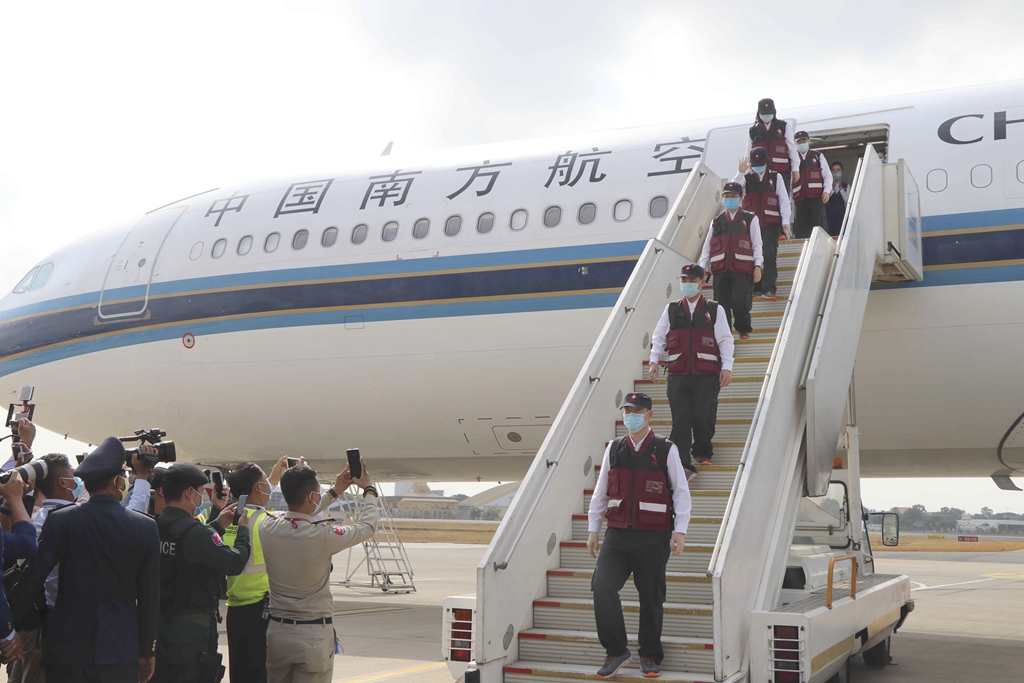
Guangxi medics reach Phnom Penh International Airport on March 23, 2020, aiding Cambodia in the Covid battle. (Xinhua/Mao Pengfei)
“During the gloomy days in early 2020, the Vietnamese supplies for Covid fight often reached the border gate in the small hours, and my Vietnamese peer and I exchanged greetings and cheers at the bridge over the Beilun river, also a boundary section of the two sides,” said Chen Xiao, director of the service center at southwest Guangxi’s Dongxing land port.
When Covid-19 was on the wane months later, China also sent medical teams and supplies to the ASEAN countries, opening green channels for faster custom clearance.
In March 2020, seven Guangxi medics took a chartered flight to Phnom Penh, aiding Cambodia in Covid fight. With N95 masks, protective suits and temperature meters, their arrival was livestreamed by Hun Sen and viewed by 600,000.
China has aided Cambodia in inoculating 90 percent of its population as of September 17. “In the battle against Covid-19, the Chinese and Cambodians have been standing together,” said Wang Wentian, the Chinese ambassador to Cambodia, adding China’s aid will last till the end of the epidemic.
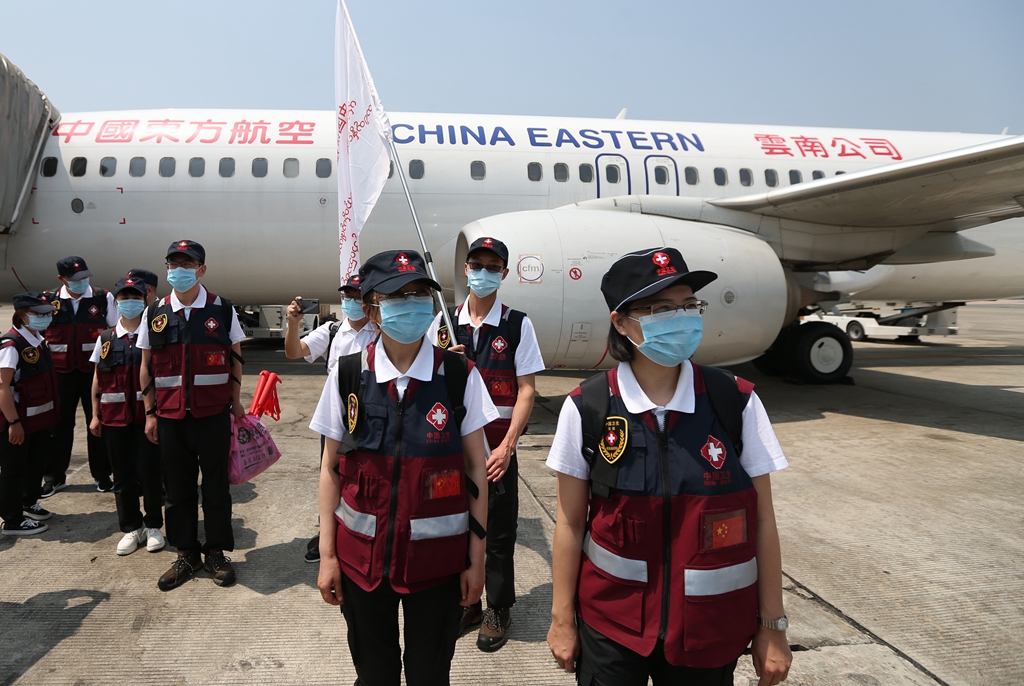
A Yunnan medical team arrives at Yangon International Airport on April 8, 2020, aiding Myanmar in Covid-19 battle. (Xinhua/Zhang Dongqiang)
Amid the Covid outbreaks, Yunnan also sent medical teams to Laos and Myanmar in succession, helping them build up facilities for nucleic acid testing. On September 25, Chinese medical aids were handed over to Laos via a virtual ceremony, and soon the vaccines and supplies entered Laos via the Yunnan land ports of Mohan and Mengkang.
As of August, China has offered ASEAN 190 million doses of Covid vaccines, embracing the idea of China-ASEAN community with a shared future and facing the pandemic challenges with its neighbors.
Win-win commerce
Metinee Nuntadee, a 30-year-old Thai girl who has been living in Guangxi since she was 20, opened a restaurant called Lan Secret Garden, allowing foodies in Nanning, regional capital of Guangxi, to taste authentic Thai dishes.
“I couldn’t find fresh lemon in Nanning markets 10 years ago, but now the groceries offer diverse foods and ingredients from ASEAN,” said Metinee, adding her daily life is now much easier as the China-ASEAN trading ties are getting closer.
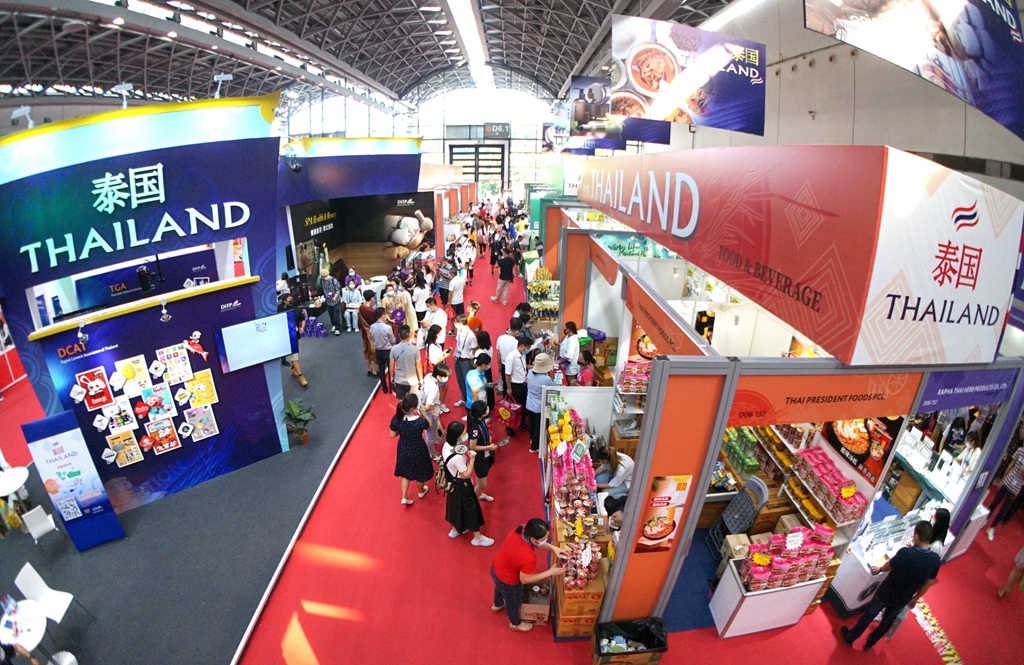
Photo taken on September 12, 2021 shows visitors at the ASEAN Pavilion of the 18th China-ASEAN Expo in Nanning, Guangxi Zhuang autonomous region. (Xinhua)
By hosting Kunming Import and Export Commodities Fair, China-South Asia Exposition (CSA expo), South and Southeast Asia Commodity Expo and Investment Fair (SSACEIF), China-ASEAN Expo and China-ASEAN Business and Investment Summit, Yunnan and Guangxi have allowed more Chinese businesses to identify their partners in ASEAN.
Meanwhile, the international expos have made it possible for ASEAN businesses to further tap the huge Chinese market. Beer Laos, Cambodian mangos, Malaysian durians and more are now familiar to Chinese consumers.
At the beginning of 2010, the China-ASEAN Free Trade Area was established and an upgraded version of the FTA was rolled out in 2019. Now tariffs of 7,000 plus products have been removed and 90 percent commodities enjoy the zero-tariff under the FTA framework.
“The China-ASEAN FTA is a pilot area for openness and cooperation in the region, allowing China-ASEAN ties to be closer and pushing forward regional economic integration,” said Xu Ningning, executive president of the China-ASEAN Business Council.
When the China-ASEAN Dialogue Relations was launched in 1991, bilateral trade stood at only 7.96 billion U.S. dollars. In 2020, however, the sum reached 684.6 billion U.S. dollars; China and ASEAN have grown to be each other’s top trading partners amid the Covid pandemic.
The 2020 China-ASEAN Trade Index stood at 241.09 points, an increase of 19.64 percent compared with the level of 2019 and up 141.09 percent compared with 2010, according to data jointly released by China's General Administration of Customs and the regional government of Guangxi in September.
“China stands ready to work with ASEAN to grasp the overriding trend, remove interference, share opportunities and promote shared prosperity. We will implement in earnest our Comprehensive Strategic Partnership, and make new strides toward building a closer China-ASEAN community with a shared future,” said President Xi Jinping on the 30th Anniversary of China-ASEAN Dialogue Relations.
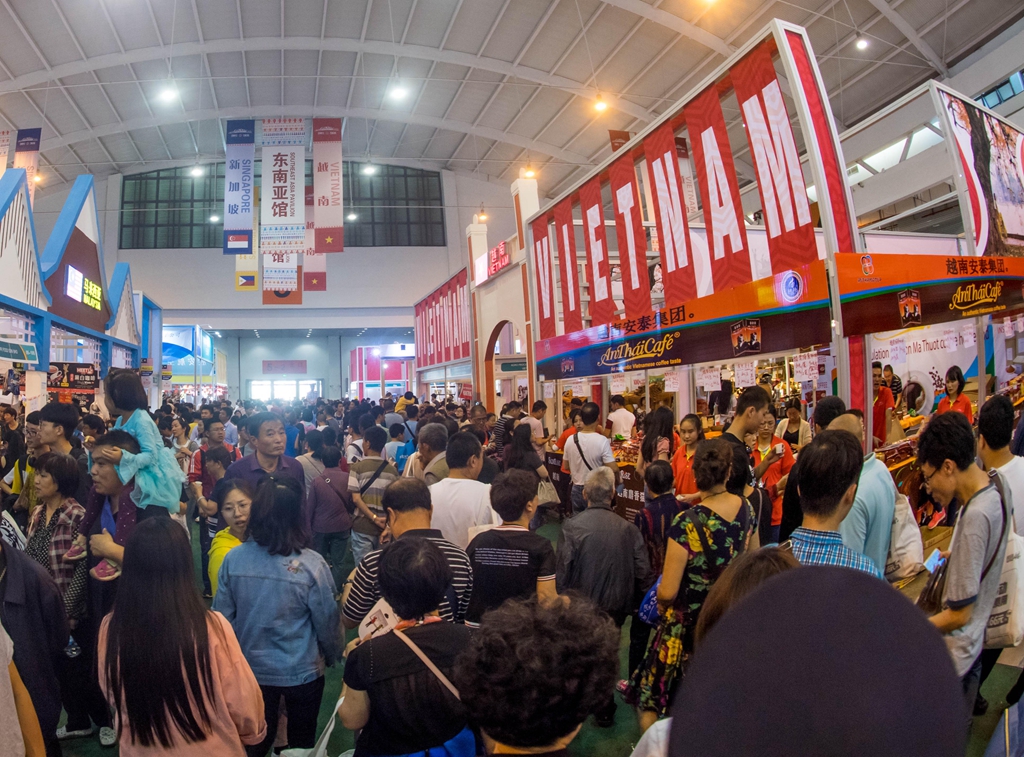
Photo taken on June 18, 2018 shows visitors at the ASEAN Pavilion of the 5th China-South Asia Expo in Kunming, Yunnan province. (Xinhua/Hu Chao)
Over the past decades, the China-ASEAN trade has grown from cargo-dominant to service and investment-oriented, featuring cooperation in big data, AI and e-commerce.
In August 2019, the China (Guangxi) Pilot Free Trade Zone and the China (Yunnan) Pilot Free Trade Zone were inaugurated on the same day. One year later, the two pilot zones signed the framework agreement on collaborative system innovation along the border, jointly exploring a new round of upgrade of the China-ASEAN Free Trade Area.
With the Regional Comprehensive Economic Partnership (RCEP), which is jointly endorsed by China and ASEAN, coming into effect in January 2022, Yunnan and Guangxi will see more business opportunities.
Reporting by Zhang Ruogu, Han Chengyuan and Liu Ziyu (Yunnan Daily); Dong Wenfeng, Wei Heng and Chen Yize (Guangxi Daily); Trans-editing by Wang Shixue